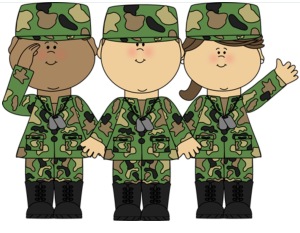31 Oct 2016 Leave a comment
in Award, children, Crafts, daily prompt, Family, fun facts, My Thoughts, mystery, Uncategorized Tags: halloween
Halloween History
31 Oct 2016 2 Comments
in Awareness, Chicken, Family, holiday, My Thoughts, Thought for the Day., thought of the day, today in history, Uncategorized Tags: halloween
Straddling the line between fall and winter, plenty and paucity, life and death, Halloween is a time of celebration and superstition. It is thought to have originated with the ancient Celtic festival of Samhain, when people would light bonfires and wear costumes to ward off roaming ghosts. In the eighth century, Pope Gregory III designated November 1 as a time to honor all saints and martyrs; the holiday, All Saints’ Day, incorporated some of the traditions of Samhain. The evening before was known as All Hallows’ Eve and later Halloween. Over time, Halloween evolved into a secular, community-based event characterized by child-friendly activities such as trick-or-treating. In a number of countries around the world, as the days grow shorter and the nights get colder, people continue to usher in the winter season with gatherings, costumes and sweet treats.
Shakespeare’s Macbeth-Enter the Witches one of my favorites.
30 Oct 2016 Leave a comment
in Awareness, Family, fun facts, holiday, Love, My Thoughts, Quotes, Thought for the Day., Uncategorized Tags: halloween, witches

William Shakespeare (1564-1616) from Macbeth
A dark Cave. In the middle, a Caldron boiling. Thunder.
Enter the three Witches.
1 WITCH. Thrice the brinded cat hath mew’d.
2 WITCH. Thrice and once, the hedge-pig whin’d.
3 WITCH. Harpier cries:—’tis time! ’tis time!
1 WITCH. Round about the caldron go;
In the poison’d entrails throw.—
Toad, that under cold stone,
Days and nights has thirty-one;
Swelter’d venom sleeping got,
Boil thou first i’ the charmed pot!
ALL. Double, double toil and trouble;
Fire burn, and caldron bubble.
2 WITCH. Fillet of a fenny snake,
In the caldron boil and bake;
Eye of newt, and toe of frog,
Wool of bat, and tongue of dog,
Adder’s fork, and blind-worm’s sting,
Lizard’s leg, and owlet’s wing,—
For a charm of powerful trouble,
Like a hell-broth boil and bubble.
ALL. Double, double toil and trouble;
Fire burn, and caldron bubble.
3 WITCH. Scale of dragon; tooth of wolf;
Witches’ mummy; maw and gulf
Of the ravin’d salt-sea shark;
Root of hemlock digg’d i the dark;
Liver of blaspheming Jew;
Gall of goat, and slips of yew
Sliver’d in the moon’s eclipse;
Nose of Turk, and Tartar’s lips;
Finger of birth-strangled babe
Ditch-deliver’d by a drab,—
Make the gruel thick and slab:
Add thereto a tiger’s chaudron,
For the ingrediants of our caldron.
ALL. Double, double toil and trouble;
Fire burn, and caldron bubble.
2 WITCH. Cool it with a baboon’s blood,
Then the charm is firm and good.
brinded – having obscure dark streaks or flecks on gray
gulf – the throat
drab – prostitute
chaudron – entrails
The above appears at the beginning of Act IV, Scene 1 as found in:
Shakespeare, William. The Globe Illustrated Shakespeare: The Complete Works Annotated. Howard Staunton ed. New York: Gramercy Books, 1993.
Love him!!! Childhood Favorite
23 Oct 2016 Leave a comment
in Awareness, children, Family, fun facts, My Thoughts, nature, pets, Uncategorized Tags: disney
National Chocolate Cup Cake Day
18 Oct 2016 Leave a comment
in Awareness, children, daily prompt, Family, fun facts, Love, this day in history, Thought for the Day., today in history, Truth, Uncategorized Tags: cup cake, food
National Chocolate Cupcake Day is observed annually on October 18. With a dollop of frosting, one sweet serving will satisfy chocolate and dessert lovers!
Cupcakes have also been known to be called:
Fairy Cakes, Patty Cakes and Cup Cakes (different from Cupcakes (one-word)
Cupcakes can be traced back to 1796 when there was a recipe notation of “a cake to be baked in small cups” written in American Cookery, by Amelia Simmons. The earliest known documentation of the term cupcake was in 1828 in Seventy-five Receipts for Pastry, Cakes, and Sweetmeats in Eliza Leslie’s Receipts cookbook.
Cupcakes were originally baked in heavy pottery cups. Today, some bakers still use individual ramekins, small coffee mugs, large teacups, or other small ovenproof pottery-type dishes for baking their cupcakes.
















